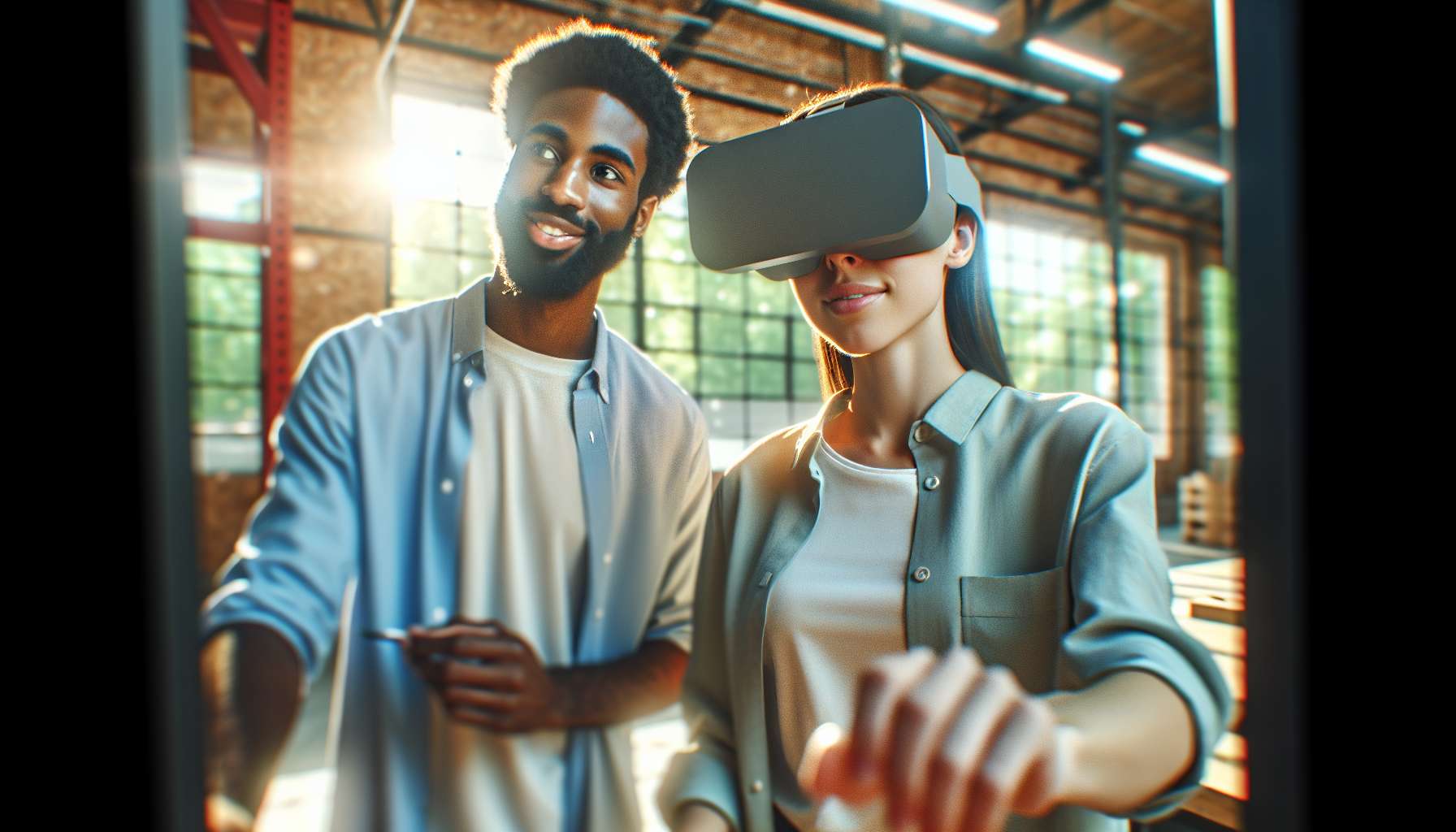The Power of Augmented Reality in Manufacturing: Saving Costs and Enhancing Efficiency
As technology continues to advance at an unprecedented pace, industries across the board are embracing innovative solutions to streamline operations and maximize productivity. One such technology that has gained significant traction in recent years is augmented reality (AR). In the manufacturing sector, AR is revolutionizing traditional processes, reducing costs, and boosting efficiency like never before.
What is Augmented Reality?
Before we delve into the cost-saving techniques of AR in manufacturing, let’s briefly understand what augmented reality is. AR is a technology that overlays digital information, such as images, videos, or 3D models, onto the real world. By using specialized devices like smart glasses or mobile applications, users can interact with virtual elements in their physical environment.
Streamlining Assembly and Maintenance Processes
One of the key areas where AR is making a significant impact in manufacturing is in assembly and maintenance processes. Traditional assembly lines often require workers to refer to manuals or consult experts for complex tasks. This can be time-consuming and prone to errors.
With AR, workers can access real-time, step-by-step instructions overlaid onto their field of view. This eliminates the need for bulky manuals and minimizes the risk of mistakes. By simply wearing AR-enabled devices, technicians can efficiently complete complex assembly tasks, reducing downtime and increasing overall productivity.
Enhancing Training and Onboarding
Training new employees and ensuring they are up to speed with complex manufacturing processes can be a costly and time-consuming endeavor. AR offers a game-changing solution by providing immersive and interactive training experiences.
Using AR simulations, new hires can learn and practice tasks in a virtual environment that mirrors the real-world manufacturing setting. This not only accelerates the learning process but also reduces the risk of accidents and errors during the initial stages of onboarding. By leveraging AR for training, manufacturers can save costs associated with traditional training methods and improve overall workforce efficiency.
Optimizing Inventory Management
Inventory management is a critical aspect of manufacturing operations, and inefficiencies in this area can lead to increased costs and delays. AR technology can play a vital role in optimizing inventory management processes.
By utilizing AR-enabled devices, warehouse personnel can quickly locate and identify specific items within a vast inventory. AR overlays can provide real-time information on stock levels, locations, and even suggest the most efficient routes for picking and packing. This not only reduces the time spent searching for items but also minimizes errors and improves overall inventory accuracy.
Real-Time Data Visualization and Analytics
AR technology also enables manufacturers to visualize and analyze real-time data in a more intuitive and accessible manner. By overlaying data onto physical objects or machinery, operators can monitor performance metrics, identify bottlenecks, and make informed decisions on the spot.
For example, AR can provide real-time feedback on machine performance, highlighting potential issues before they escalate into costly breakdowns. This proactive approach to maintenance can significantly reduce downtime and extend the lifespan of equipment, ultimately leading to substantial cost savings.
The Future of AR in Manufacturing
As AR continues to evolve and become more sophisticated, its potential in manufacturing is boundless. From remote assistance and collaborative design to predictive maintenance and quality control, the possibilities are endless.
Experts predict that the global market for AR in manufacturing will continue to grow at a rapid pace, reaching a value of $4.7 billion by 2026. This forecast highlights the increasing recognition of AR’s ability to drive cost savings, enhance efficiency, and transform traditional manufacturing processes.
Conclusion
Augmented reality is revolutionizing the manufacturing industry by reducing costs and increasing efficiency. By streamlining assembly and maintenance processes, enhancing training and onboarding, optimizing inventory management, and providing real-time data visualization, AR is transforming traditional manufacturing operations.
As a mid-high level business executive, it is crucial to stay ahead of the curve and explore the potential of AR in your manufacturing processes. Embracing this technology can not only save costs but also give your business a competitive edge in today’s rapidly evolving market.





